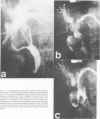Abstract
Choledochoscopic lithotomy with the aid of electrohydraulic lithotripsy was performed in 40 patients, including 16 patients with choledocholithiasis, 15 with hepatolithiasis, and 9 with cholecystolithiasis. As a route for the choledochoscopy, a T-tube tract, external cholecystostomy, or jejunal limb of hepaticojejunostomy was used in nine patients, while percutaneous transhepatic biliary drainage followed by dilatation of the track was established in 31 patients. The largest cholesterol stone measured 55 mm by 33 mm and the largest bilirubinate stone measured 52 mm by 37 mm. The stones were disintegrated in all but one patient in whom choledochoscopic access to a gallstone was difficult due to deformity of the gallbladder. Complete removal of the stones was achieved in 38 of 39 patients. In a patient with hepatolithiasis, small stones located deep in inaccessible branches of the intrahepatic duct remained unremovable. There were no serious complication. Minor complications occurred, including bleeding from the bile duct mucosa in four patients and postprocedure chills and fever in three. Choledochoscopic lithotomy with electrohydraulic lithotripsy is efficient and useful to remove biliary calculi in patients who are poor surgical risks.
Full text
PDF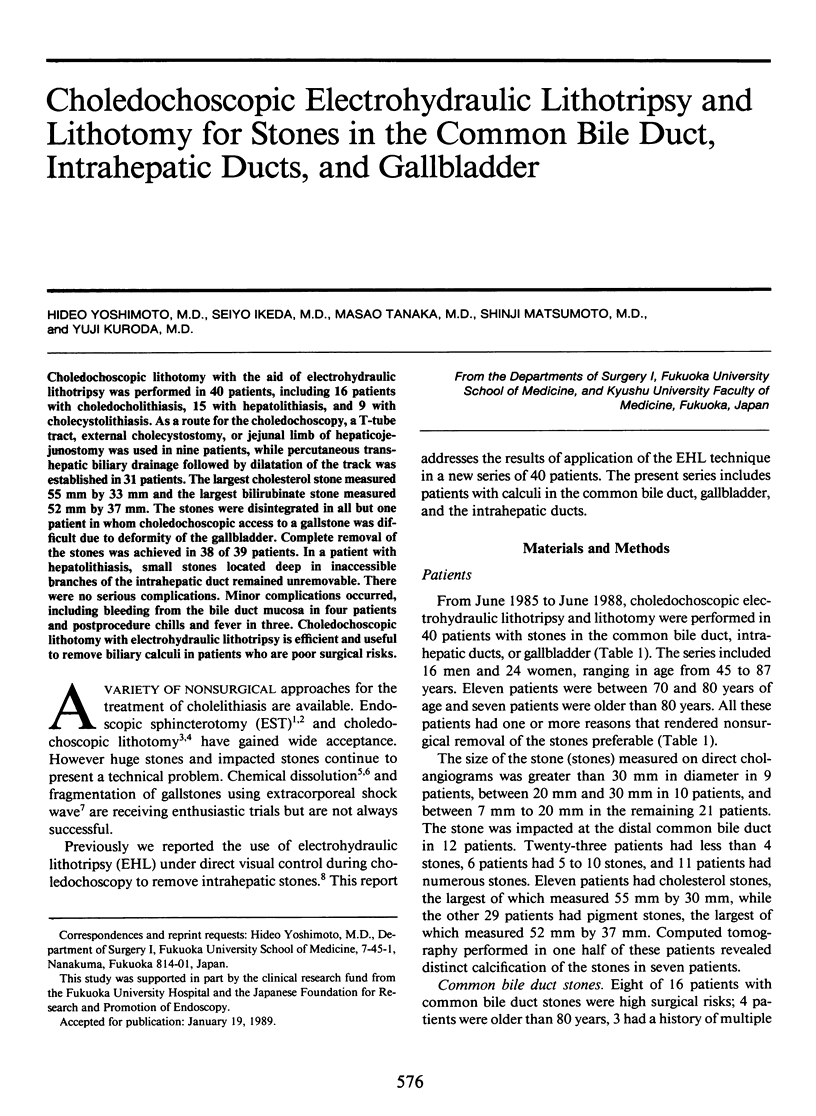
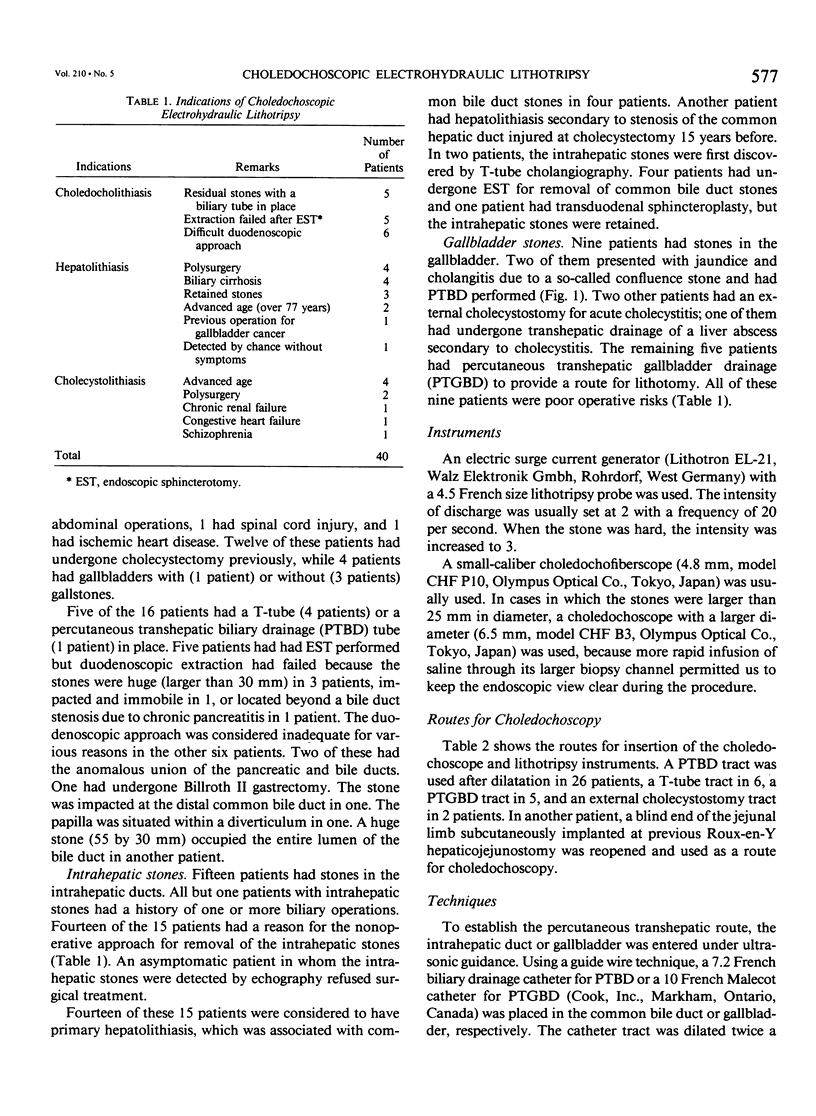
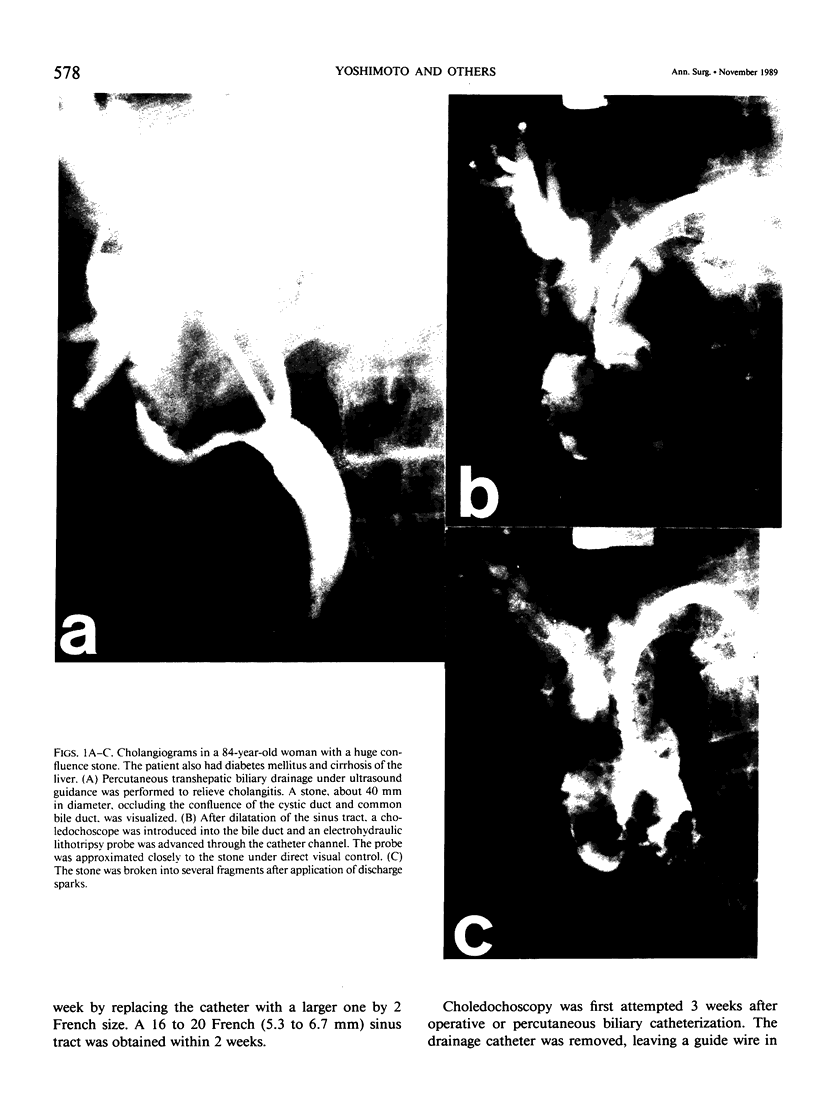
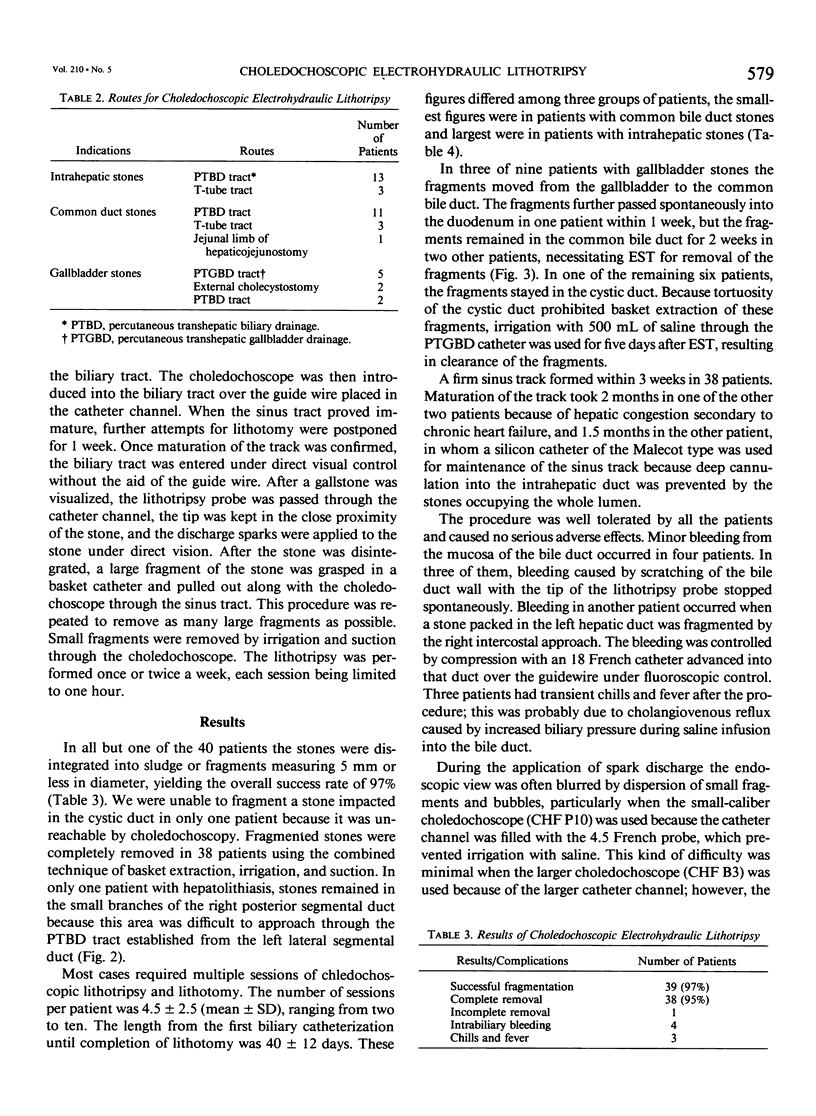
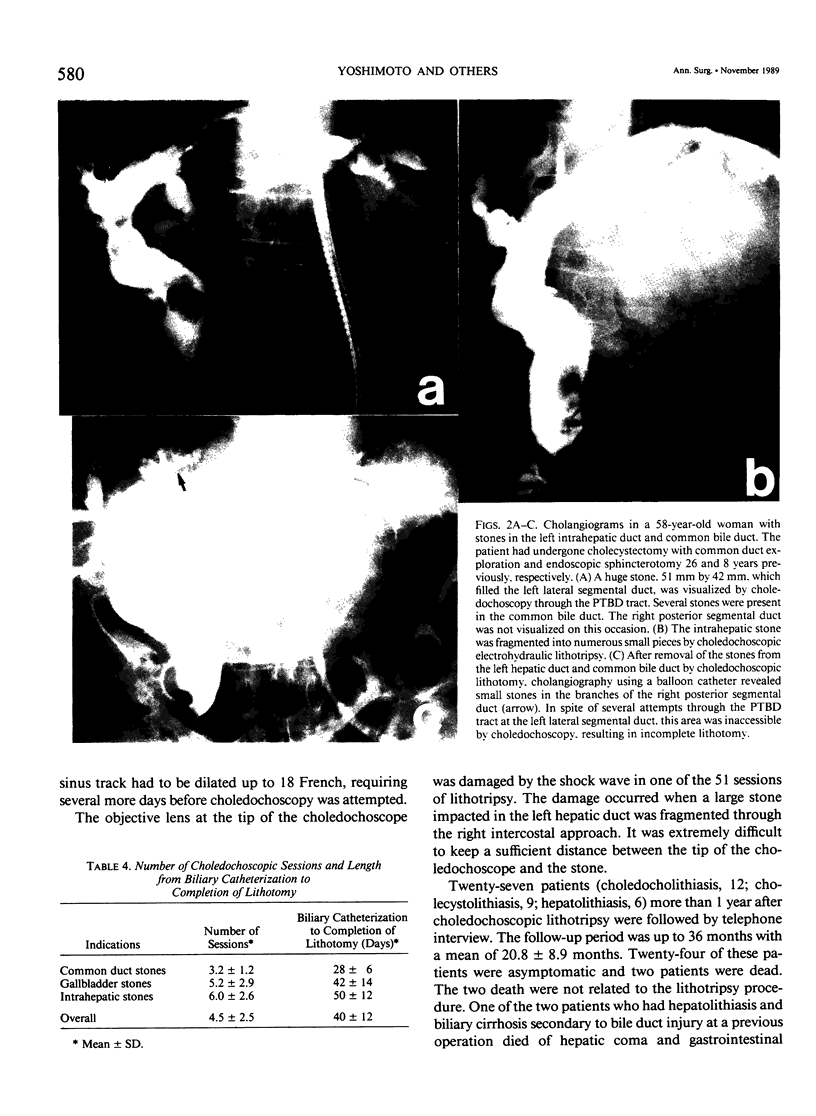
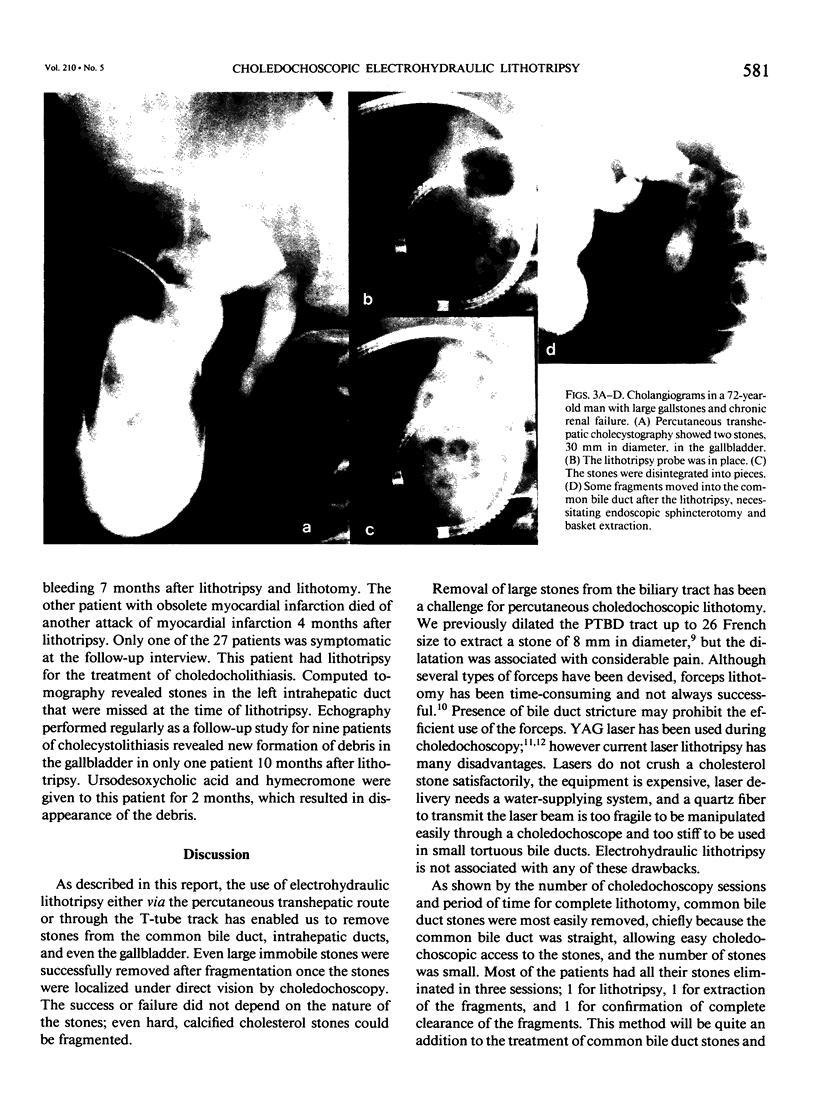
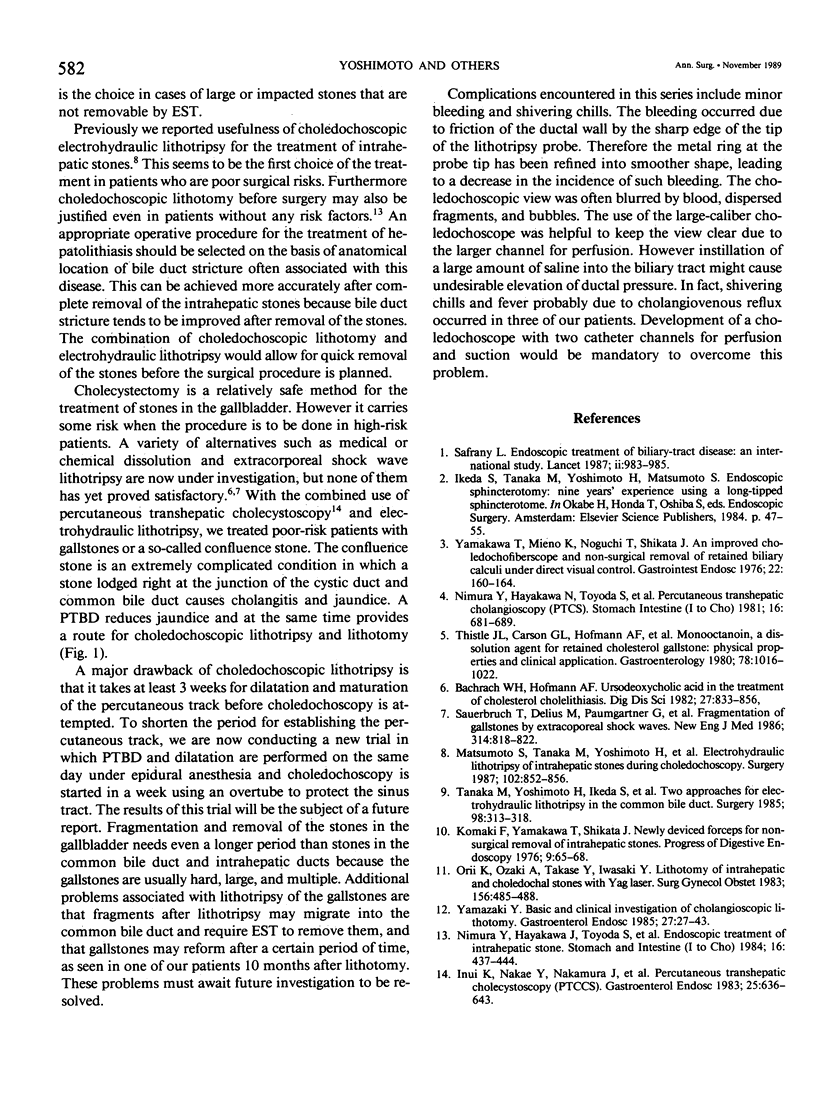
Images in this article
Selected References
These references are in PubMed. This may not be the complete list of references from this article.
- Bachrach W. H., Hofmann A. F. Ursodeoxycholic acid in the treatment of cholesterol cholelithiasis. Part II. Dig Dis Sci. 1982 Sep;27(9):833–856. doi: 10.1007/BF01391378. [DOI] [PubMed] [Google Scholar]
- Matsumoto S., Tanaka M., Yoshimoto H., Miyazaki K., Ikeda S., Nakayama F. Electrohydraulic lithotripsy of intrahepatic stones during choledochoscopy. Surgery. 1987 Nov;102(5):852–856. [PubMed] [Google Scholar]
- Orii K., Ozaki A., Takase Y., Iwasaki Y. Lithotomy of intrahepatic and choledochal stones with Yag laser. Surg Gynecol Obstet. 1983 Apr;156(4):485–488. [PubMed] [Google Scholar]
- Sauerbruch T., Delius M., Paumgartner G., Holl J., Wess O., Weber W., Hepp W., Brendel W. Fragmentation of gallstones by extracorporeal shock waves. N Engl J Med. 1986 Mar 27;314(13):818–822. doi: 10.1056/NEJM198603273141304. [DOI] [PubMed] [Google Scholar]
- Tanaka M., Yoshimoto H., Ikeda S., Matsumoto S., Guo R. X. Two approaches for electrohydraulic lithotripsy in the common bile duct. Surgery. 1985 Aug;98(2):313–318. [PubMed] [Google Scholar]
- Thistle J. L., Carlson G. L., Hofmann A. F., LaRusso N. F., MacCarty R. L., Flynn G. L., Higuchi W. I., Babayan V. K. Monooctanoin, a dissolution agent for retained cholesterol bile duct stones: physical properties and clinical application. Gastroenterology. 1980 May;78(5 Pt 1):1016–1022. [PubMed] [Google Scholar]
- Yamakawa T., Mieno K., Nogucki T., Shikata J. An improved choledochofiberscope and non-surgical removal of retained biliary calculi under direct visual control. Gastrointest Endosc. 1976 Feb;22(3):160–164. doi: 10.1016/s0016-5107(76)73733-7. [DOI] [PubMed] [Google Scholar]
- van Holten-Verzantvoort A. T., Bijvoet O. L., Cleton F. J., Hermans J., Kroon H. M., Harinck H. I., Vermey P., Elte J. W., Neijt J. P., Beex L. V. Reduced morbidity from skeletal metastases in breast cancer patients during long-term bisphosphonate (APD) treatment. Lancet. 1987 Oct 31;2(8566):983–985. doi: 10.1016/s0140-6736(87)92555-4. [DOI] [PubMed] [Google Scholar]



